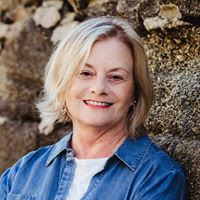I can't tell you how to build a plot, but these authors can and do.
I've got so much to learn!
Seems like everyone knows about Plot & Structure by James Scott Bell and Writing the Breakout Novel (and corresponding workbook) by Donald Maas.
I heart them.
But I also found 20 Master Plots (And How to Build Them) by Ronald B. Tobias buried on my shelf. And it makes more sense to me now than it did when I bought it over 20 years ago.
He states, "The best place to start a discussion about plots is to trace their bloodlines to the beginning . . . the two basic plots from which all other plots flow (that) are still the foundation of all literature. If you understand the essence of your plot, you will understand better how to go about writing it."
He goes on, "In Dante's Inferno there are only two basic sins in all the levels of hell. One is called forza, crimes of violence and force. The other basic sin is called forda, which is Italian for fraud."
Force or fraud
"Dante understood human character. These two sins come from two basic functions of human beings. Force is power, strength, physicality. Fraud comes from wit, cleverness, mentality. The Body and The Mind"
Body or mind.
When we have a story idea, we need to decide if it can be told more in terms of action or more in terms of the inner workings of character and human nature.
Doing or being.
The action plot is a puzzle plot where some kind of mystery needs to be solved. The mind plot is an idea plot where the characters almost always search for some kind of meaning.
Mystery or meaning.
If the story is plot driven, the mechanism is more important than the specific characters. The characters make the plot happen.
If the story is character driven, the mechanism is less important than the specific characters. The plot helps the characters find meaning.
Character driven or plot driven.
You decide the focus. Then you find some balance.
Tobias describes 20 basic plots (you can see them in the Amazon book preview.) He provides checklists at the end of each chapter.
He also provides a final checklist at the end of the book, questions you can ask yourself as you develop your plot.
"If you can answer all of them, you have a grasp of what your story is about. But if you can't answer any of them, you still don't know what your story is and what you want to do with it."
I'm so glad for good teachers.
I'm heading out to my porch now with a big glass of iced herb tea to rock and read.
Copyright © 2010 by Sandra Heska King

















Great breakdown of the book, Sandra! I don't have this one yet, but I think I may have to add that to my next Amazon order!
ReplyDeleteI'm with Jody. This one sounds worth purchasing.
ReplyDelete~ Wendy
Great blog Sandy!!! Duane recommended your other blog at his site, and how you wrote about his broken finger. He really praised your writing.
ReplyDeleteAfter reading this post, I can see why. I am so glad he recommended checking out your blog.
Plots seem to a problem for a lot of writers, and you've given a lot of food for thought. I've read dozens of books, and I'm still scratching my head. However, not long ago, after reading Judith Barrington's "Writing the Memoir" at least a half a dozen times, I finally got it. Don't you just love it when, finally, it all comes together.
I have my plot now, but you've added much more to my saddle bags. Thanks for all the info. Looking forward to reading your blog, which looks like I'll be returning often.
Have a nice day.
Oh, I always forget this when commenting - add your blog. It's http://catchingthethread.blogspot.com
@Jody and Wendy: It's easy and fun reading, too. I have way too many Amazon orders lately. ;)
ReplyDelete@Bonnie: Welcome! Thanks so much for coming by and for your kind words. Wow. I'm blushing.
I'm going right now to check out your blog. Have a great day!
Hi Sandra -
ReplyDeleteThanks for reviewing this book. I'm currently reading Noah Lukeman's, "The First Five Pages."
Blessings,
Susan :)